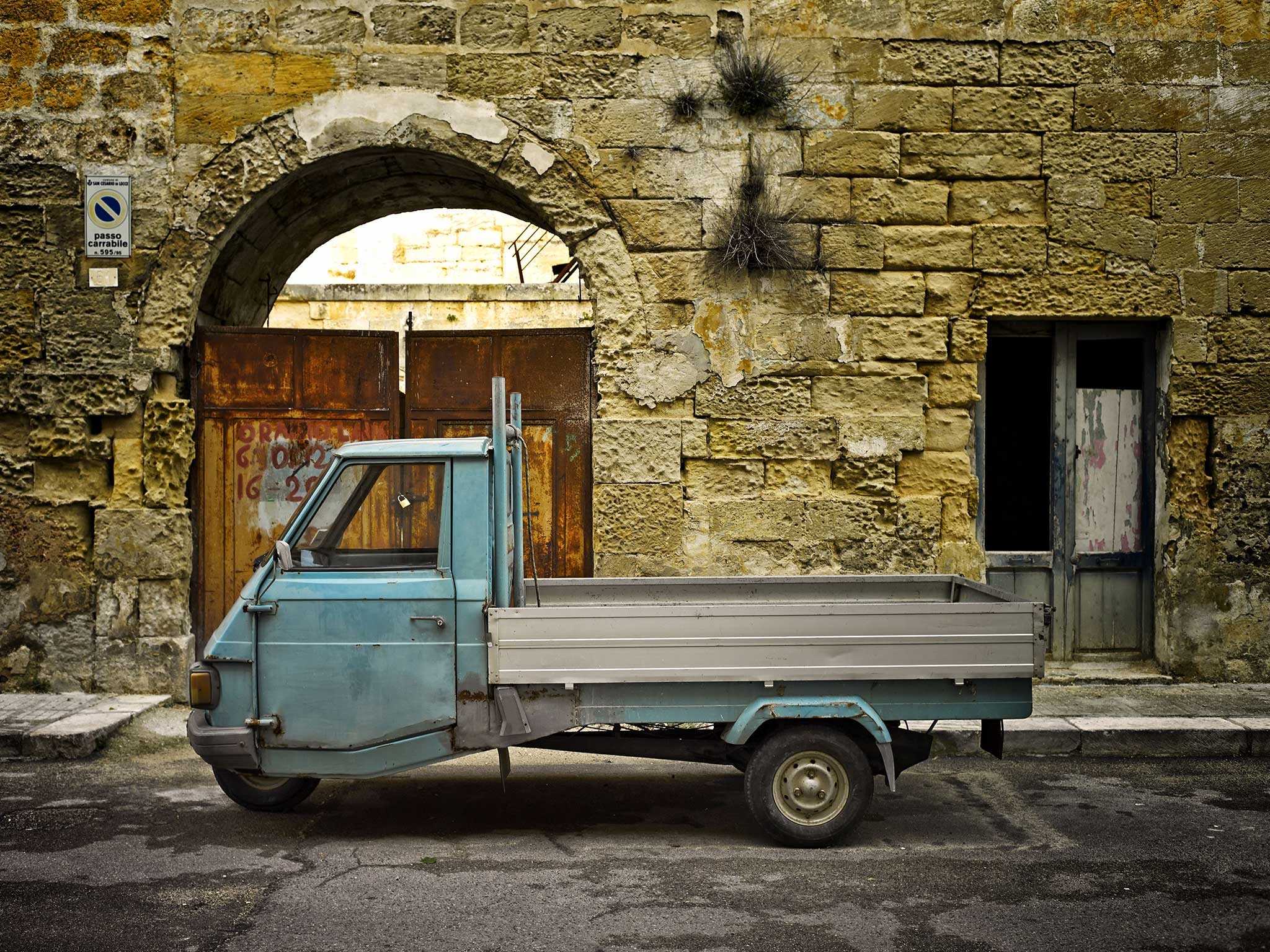Rising damp excavation at cafe in Lecce unearths 2,500 years of Italian history in 5,000 incredible objects
Owner found so much archaeological treasure buried beneath his property that he now has a museum. Michael Day hears his story

Your support helps us to tell the story
From reproductive rights to climate change to Big Tech, The Independent is on the ground when the story is developing. Whether it's investigating the financials of Elon Musk's pro-Trump PAC or producing our latest documentary, 'The A Word', which shines a light on the American women fighting for reproductive rights, we know how important it is to parse out the facts from the messaging.
At such a critical moment in US history, we need reporters on the ground. Your donation allows us to keep sending journalists to speak to both sides of the story.
The Independent is trusted by Americans across the entire political spectrum. And unlike many other quality news outlets, we choose not to lock Americans out of our reporting and analysis with paywalls. We believe quality journalism should be available to everyone, paid for by those who can afford it.
Your support makes all the difference.“Before I was a cook. Now I’m in charge of a museum,” Luciano Faggiano said, laughing. In truth, the career change of Mr Faggiano, who celebrated his 60th birthday this week, was more spectacular than that. He went from Lecce café owner to Indiana Jones in the space of a few weeks.
Just yards beneath his unassuming property in the centre of Lecce, he discovered a layered archaeological treasure trove with remains from the Knights Templar, the ancient Romans, the region’s original Greek settlers and even a hole in which medieval nuns used to mummify bodies before they buried them.
“It’s amazing what we found in a relatively small area,” says Mr Faggiano, with unconscious understatement.
It started with a faulty toilet, or, rather, rising damp – quite a lot of damp which eventually caused the tenants to leave the ground floor of the property Mr Faggiano bought in 1980. In 2000, the Faggianos decided to fix the damp problem and turn the place into a trattoria. “We thought it was a pipe from the toilet that was to blame,” said his middle son, Andrea, 34. Digging to get to the pipe “we soon noticed there was something strange”.
In fact, they discovered a false floor and glimpses of medieval paving as they continued tunnelling to get to the broken pipe. After three weeks of carting out bags of material at all hours of the day and night, it appeared that a suspicious neighbour alerted the authorities.
Local laws forbid digging deeper than 50cm in a region that is archaeologically rich even by Italian standards. City officials suspected the Faggianos were performing an illegal excavation. They were told to stop digging and wait. Then nothing happened for an entire year.
“Italy’s like that,” said Mr Faggiano. “If you’re not a policeman or a politician, nothing gets done.”
Finally, the council declared that the Faggianos could resume their work on the pipe provided they were closely observed by an expert from the culture ministry. With an archaeologist sent by the cultural heritage department to oversee what the Faggianos maintained was simply a messy plumbing job, the laborious work continued.
But within weeks it became clear they had discovered something extraordinary. The false floor led to a level paved with medieval stone, which itself led to a tomb of the Messapians, Greeks who arrived in Puglia some 500 years before the birth of Christ.
Soon they found ancient Roman vases, medieval artefacts and hidden frescoes. Mr Faggiano’s sons Andrea and Marco put their college studies on hold to do the digging. “We found more than 5,000 objects,” said Andrea. “My favourite was a ring from a Jesuit bishop that contained 33 diamonds. And 10m below ground we found a hole that was 15m deep. The archaeologist said this was used by Franciscan nuns for drying out dead bodies – mummifying them for burial.”
His younger brother, Davide, who was only 12 years old in 2001, had a rope tied around him and was used to ferret into the gaps that were too small for his elder brothers to squeeze into.
Almost all of the artefacts have been taken by the authorities. Some have been placed in a city museum, but most are being studied by experts from the national cultural ministry. Mr Faggiano said he was hoping to get back more of the treasures.
“It’s not clear what’s happened to them all,” he said. “But they seem to have left us mostly the broken pieces.”
The Faggiano family paid for and performed the entire excavation, even though they acknowledge the treasures they dug up are the property of the state. “It was hard work,” said Mr Faggiano. “My sons were digging and I paid for it. The city council didn’t do a thing.”
Today the building, at Via Ascanio Grandi 56, is called the Faggiano Archaeological Museum. Lecce council has granted it the status of an independent museum – the only one in the city.
Visitors can descend through the underground chambers via spiral metal stairwells. Glass flooring allows them to see the building’s historical layers, with a Roman grain store, Knights Templar artwork and even the Faggianos’ own subterranean river, the Idume.
“We have all of Italian history covered,” said Davide Faggiano. “You can get a cappuccino for your breakfast in our café and then pop over to our museum to see culture starting from 2,500 years ago.”
The Faggianos are not finished yet. The faulty pipe was eventually found and fixed. They still plan to open a new place to eat, however. Only now it might not be a trattoria, but rather “one of those cafes, you have for visitors – like you see in the British Museum”, said Andrea.
Join our commenting forum
Join thought-provoking conversations, follow other Independent readers and see their replies
Comments